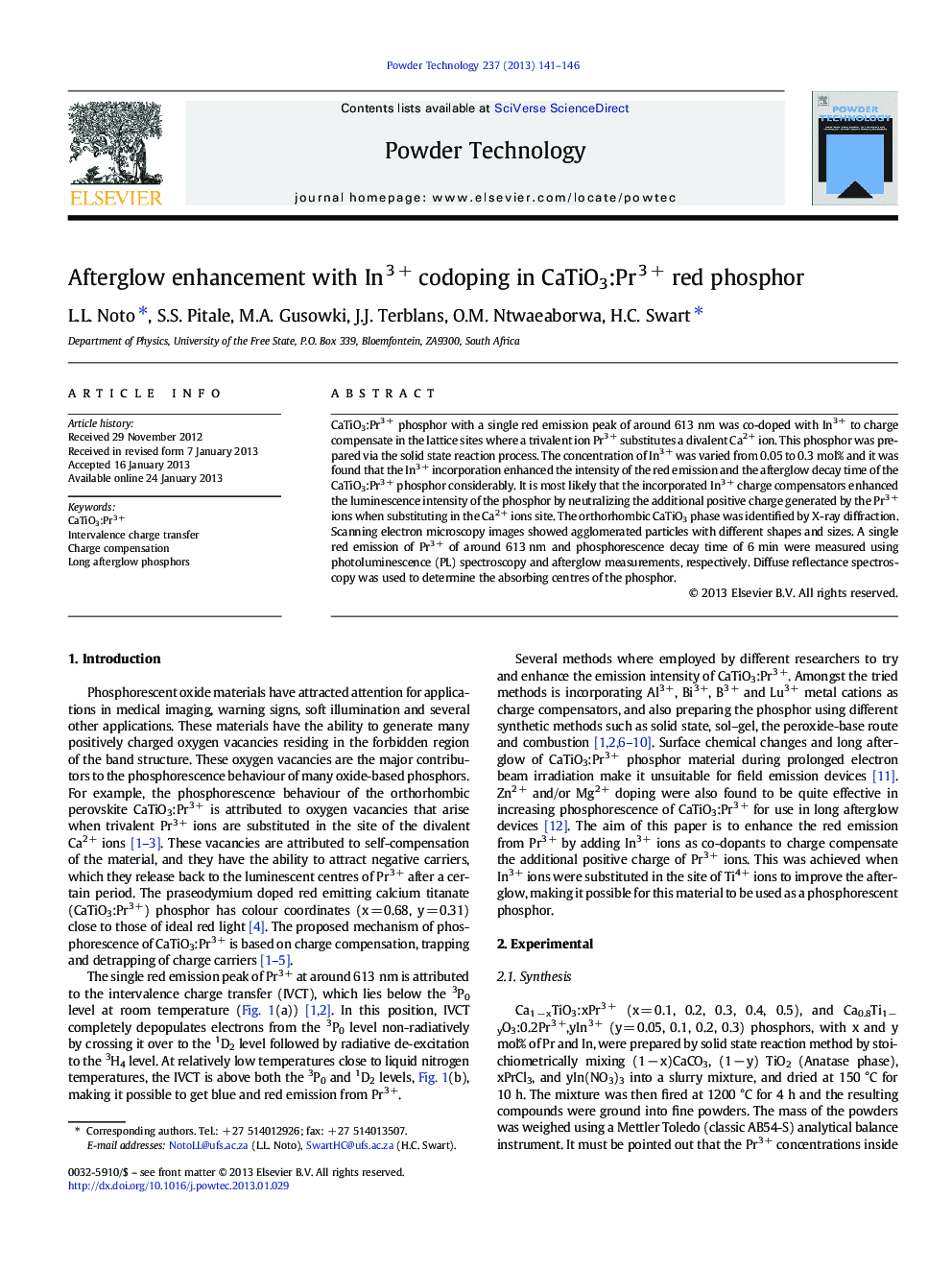| کد مقاله | کد نشریه | سال انتشار | مقاله انگلیسی | نسخه تمام متن |
|---|---|---|---|---|
| 236827 | 465686 | 2013 | 6 صفحه PDF | دانلود رایگان |

CaTiO3:Pr3 + phosphor with a single red emission peak of around 613 nm was co-doped with In3 + to charge compensate in the lattice sites where a trivalent ion Pr3 + substitutes a divalent Ca2 + ion. This phosphor was prepared via the solid state reaction process. The concentration of In3 + was varied from 0.05 to 0.3 mol% and it was found that the In3 + incorporation enhanced the intensity of the red emission and the afterglow decay time of the CaTiO3:Pr3 + phosphor considerably. It is most likely that the incorporated In3 + charge compensators enhanced the luminescence intensity of the phosphor by neutralizing the additional positive charge generated by the Pr3 + ions when substituting in the Ca2 + ions site. The orthorhombic CaTiO3 phase was identified by X-ray diffraction. Scanning electron microscopy images showed agglomerated particles with different shapes and sizes. A single red emission of Pr3 + of around 613 nm and phosphorescence decay time of 6 min were measured using photoluminescence (PL) spectroscopy and afterglow measurements, respectively. Diffuse reflectance spectroscopy was used to determine the absorbing centres of the phosphor.
Photoluminescence and thermoluminescent data were used to propose a charge transfer mechanism for CaTiO3:Pr3 +,In3 + phosphor. Negative oxygen point defects (Oi″) temporarily trap and release holes (h+) to the 3H4 level, and also positive calcium (Cai″) point defects trap and hold electrons (e−). The latter point defects are responsible for the generation of negative calcium vacancies (VCa″) that trap and hold h+.Figure optionsDownload as PowerPoint slideHighlights
► CaTiO3:Pr3 + was co-doped with In3 + via solid state reaction method.
► In3 + co-dopant ions were introduced as charge compensator ions.
► In3 + enhanced the red emission intensity and afterglow decay time.
► Energy values of the defect levels leading to the long afterglow were determined.
► A luminescent mechanism is proposed.
Journal: Powder Technology - Volume 237, March 2013, Pages 141–146